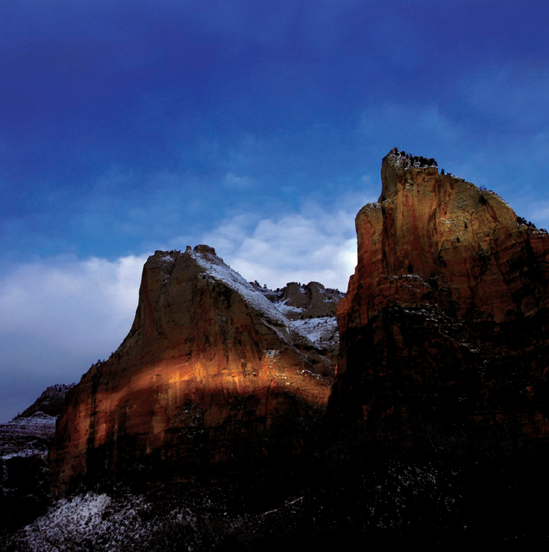Chapter 10. MASTERING NIGHT AND LOW LIGHT PHOTOGRAPHY

Your Best Friend, The Tripod
Capturing Skylines
Taking Photos At Dusk
Creating Soft, Moody Light With Low Light
Capturing The Motion Of Lights
Long Exposures For Celebrations
Now that all the different angles and textures and directions and styles of lighting have been discussed, it is time to talk about shooting when there is no light. Really, plenty of light is often available; it just takes a while to get enough of it to make a photograph. There are special challenges in photographing low-light situations, and the long shutter speed is just one of them. This chapter explores ways to get the best exposures when the light is low or seems to be missing completely.
YOUR BEST FRIEND, THE TRIPOD
Although not all low-light photographs are made while using a tripod, most of them are. In order to get the best results — meaning steady, sharp and solid images — a tripod must be used. Tripods need not be expensive, but they should be sturdy enough to hold the camera still in a slight breeze. With the size of digital cameras getting smaller and smaller, this is ever more important as the camera's weight might not help to hold the tripod still.
A couple of additional things help keep the camera from blurring. The first thing is making sure that all of the leg extensions are nice and tight. If your tripod uses a twisting type lock, then make sure that ...
Get Lighting Photo Workshop now with the O’Reilly learning platform.
O’Reilly members experience books, live events, courses curated by job role, and more from O’Reilly and nearly 200 top publishers.

